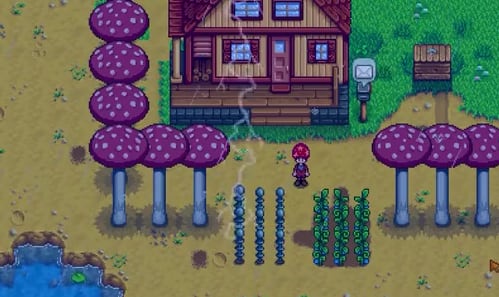Mastering the Rain Totem in Stardew Valley: From Crafting to Usage
In the charming world of Stardew Valley, weather plays an indispensable role in your farming activities. The Rain Totem, an often-overlooked tool, has the power to change the weather, bringing rainfall to your crops, among other things. Despite its seemingly straightforward function, using the Rain Totem effectively requires a nuanced understanding of the game’s mechanics. This guide will deep dive into the complexities of this tool, from how it works to the most efficient ways to use and obtain it.
What is the Rain Totem?
The Rain Totem is described as an item that “greatly increases the chances of rain tomorrow.” While the item’s description may sound straightforward, its real-world applications and limitations are far from simple.
The Mechanics of Rain Totem
Location Matters
Using the Rain Totem considers your current location in the game. The weather in Pelican Town and Ginger Island is not interdependent. So, using a Rain Totem in one location does not affect the other.
Weather at Ginger Island
Ginger Island experiences only two kinds of weather: sunny and rainy. Thunderstorms don’t occur, so even deploying a Lightning Rod here will not generate batteries. On your first day at Ginger Island, it’s guaranteed to be sunny. After that, there is a 24% chance for rain. Using the Rain Totem on the island assures rain for the following day.
Weather in Pelican Town
Outside of Ginger Island, every other area in the game counts as part of Pelican Town, including the Desert and Skull Cavern. When you use the Rain Totem in Pelican Town, the outcome is not always guaranteed unless today’s weather is thunderstorms. If you use it on a thunderstorm day, you’ll get another thunderstorm day; if it’s any other type of weather, you can expect regular rain.
Beware of Fixed Weather Days
Stardew Valley features some days with predetermined weather. For example:
- First Spring Year 1: Guaranteed rain on the 3rd
- First Spring Year 1: Guaranteed sunny days on the 1st, 2nd, and 4th
- Every 1st of the month: Guaranteed sunny day
- 13th and 26th of Summer: Guaranteed thunderstorms
Be cautious when you use the Rain Totem on these fixed days, or you’ll essentially waste it. Nothing will happen to the weather.
Practical Uses of the Rain Totem
Irrigation
One of the main uses of the Rain Totem is to help with irrigation. For example, you can spend your Spring mining instead of upgrading your hoe or crafting sprinklers. During Summer, you might have lots of gold but no sprinklers for planting starfruits. This is also useful in Beach Farm where you can’t place sprinklers. Using the Rain Totem in these scenarios can save you a lot of energy.
Battery Farming
Batteries are valuable resources, essential for crafting items like Crystalariums and Iridium Sprinklers. You generally obtain them from Lightning Rods during thunderstorms. Because the first Spring does not have thunderstorms, your earliest opportunity is in the first Summer, specifically on the guaranteed thunderstorm days of 13th and 26th.

Story Progression and Special Events
Some story events, like Shane’s Six Heart Cliffside event, only trigger during rainy days. Also, the Mermaid Pendant required for marriage is only sold by the Old Mariner during rainy days. Using the Rain Totem ensures that you don’t miss out on these opportunities.
How to Obtain the Rain Totem
There are two primary methods for obtaining the Rain Totem:
Crafting
You unlock the Rain Totem recipe at Foraging Level 9. The crafting materials include:
- 1 Hardwood
- 1 Truffle Oil
- 5 Pine Tar
While Hardwood and Pine Tar are easy to collect, Truffle Oil can be a bottleneck unless you have pigs, which are expensive and require high friendship levels to produce truffles.
Skull Cavern Chests
The Skull Caverns offer a 1% chance to find 1–3 Rain Totems in treasure chests. This is the same chance as finding an Auto-Petter, making this method challenging and luck-dependent.
Conclusion
The Rain Totem is more than just a gimmick in Stardew Valley; it’s a resourceful tool that can be utilized in various aspects of the game. Understanding the underlying mechanics of weather patterns in Pelican Town and Ginger Island will help you optimize its use. Whether it’s for farming, crafting, or progressing through story events, this guide will ensure you make the most out of this underappreciated item.
By grasping these elements, you will become not just a skilled farmer but also a master of elements in the world of Stardew Valley. So, let the rain fall and enrich your farming life in ways you’ve never imagined.